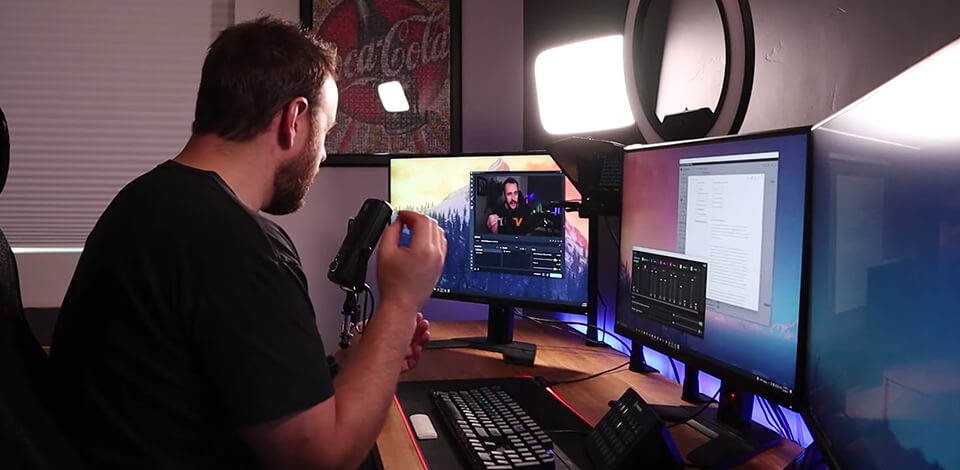
With the best ring light, it is easier to capture the attention of the audience to your live streaming and edited content and make the production process more efficient. Look for models that are reasonably priced, have smart features, and offer lighting control.
Experienced vloggers usually use a multi-light system with a key and additional lighting equipment, whereas beginners should acquire only a single, high-quality key light.
NEEWER LED Video Light Kit
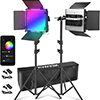 A variety of color options and the ability to adjust the output are the most important points for me. As a rule, I am on battery but it is also advantageous to have the AC. The stands are really small, but when working outside, I prefer using larger ones. Besides, I like that the app is absolutely user-friendly. The ability to pre-save light settings is also beneficial.
A variety of color options and the ability to adjust the output are the most important points for me. As a rule, I am on battery but it is also advantageous to have the AC. The stands are really small, but when working outside, I prefer using larger ones. Besides, I like that the app is absolutely user-friendly. The ability to pre-save light settings is also beneficial.
| IMAGE | NAME | FEATURES | |
|---|---|---|---|

|
Elgato Key Light
FOR PROS
|
CHECK PRICE → | |

|
Logitech Litra Glow
BUDGET
|
CHECK PRICE → | |

|
UBeesize 12'' Selfie Ring
FOR VLOGS
|
CHECK PRICE → | |

|
Lume Cube
BICOLOR
|
CHECK PRICE → | |

|
Razer Key Light Chroma
REMOTE CONTROL
|
CHECK PRICE → | |

|
Govee Glide Hexa
RGBIC PANELS
|
CHECK PRICE → | |

|
Logitech G Litra Beam
DUAL-SIDED
|
CHECK PRICE → |
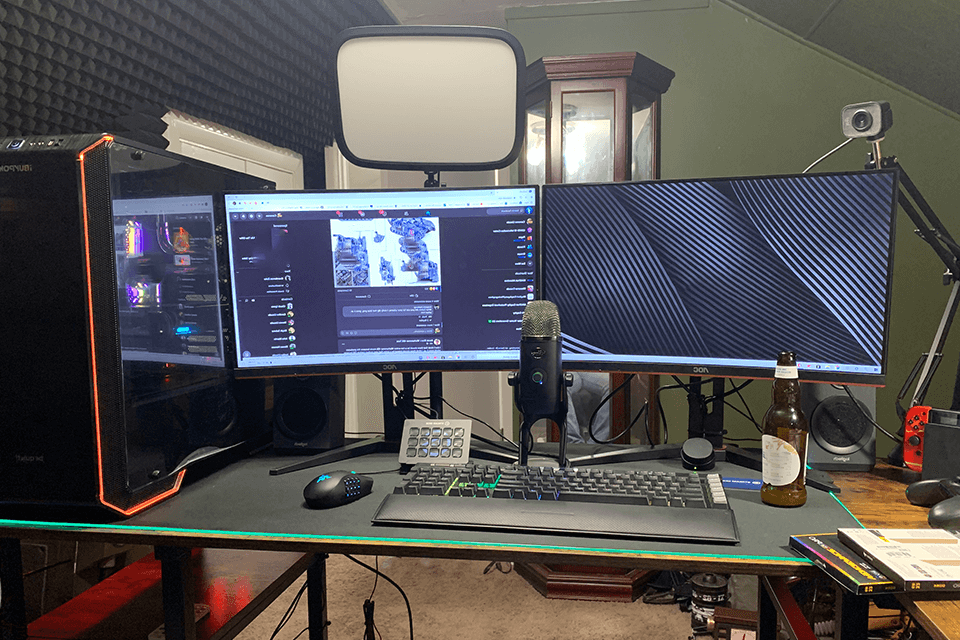
Light source: Key light | Max brightness: 2800 Lumens | Light temperature range: 2900-7000K | RGB: No | Wireless: No | Connectivity: Wi-Fi
I’ve been streaming for some time now and have always had problems finding the ideal lighting setup, and the Elgato Key Light was a real lifesaver in this case. I was amazed by the high level of brightness, it offers.
At 2800 lumens, this lighting for TikTok properly illuminates the whole setup eliminating the undesired shadows and ensures consistent lighting for my streams. No matter what time of the day I create content, my viewers will get a crisp and clear pic enjoying it to the full.
It is a sturdy and easy-to-attach desk clamp, designed to save space. Moreover, it is possible to change the height and angle of this model to make it suitable for any setup. For me, the ability to control the light remotely is a considerable plus as well.
Setting up the Elgato Key Light was a no-brainer. I needed only several minutes to sync it with the game recording software. Customization of brightness and color temperature according to my wishes was a cinch as well. The intuitive and straightforward interface of the app that enables me to adjust any setting on the fly adds more points to this model.
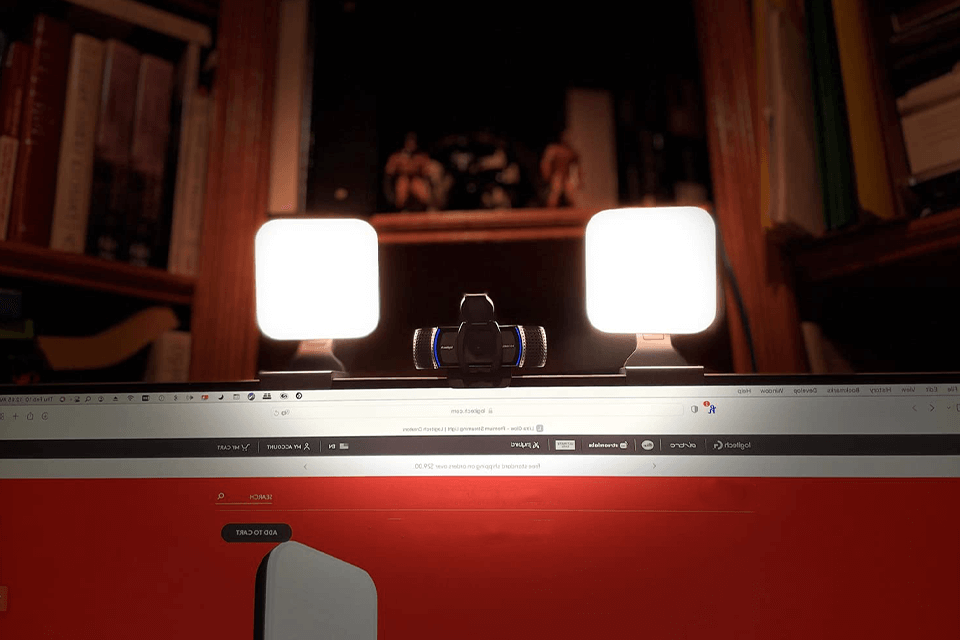
Light source: Key light | Max brightness: 250 Lumens | Light temperature range: 2700-6500K | RGB: No | Wireless: No | Connectivity: USB
Logitech Litra Glow boasts exceptional brightness, which makes it the best desk light for streaming. With its versatile bracket, it is easy to attach the device to my laptop for live streaming. However, it is not suitable for curved screens, only working when positioned on the corners. But DSLR owners can attach it to the top of the shoe mount.
The Logi Options+ program lets you tweak any setting, which is a considerable advantage as well.
It is easy to tweak the lighting parameters making it either hot or cool, high or low. Another reason I prefer this light is that you can turn it off or on whenever it is needed no matter whether the laptop is working or not. However, there are a few things that really disappoint me like the inconvenient location of the power button and a relatively high price.
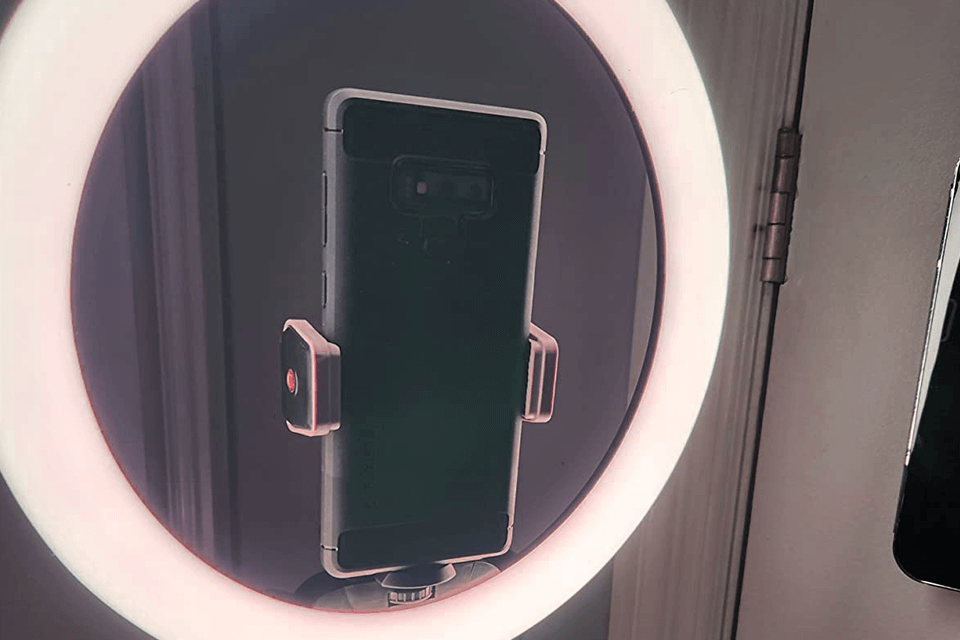
Light source: Key / Fill light | Brightness: 10 levels | Light temperature range: 3000-6000K | RGB: No | Wireless: Yes | Connectivity: Wi-Fi
I bought this ring light to shoot stunning Instagram reels and stories and not in vain. It has been a great addition to my existing video lighting kit. The light enhanced my videos considerably, providing enough illumination to make my content stand out.
Varying height options, light modes, and brightness levels appeal to me as well. Its settings are easy to adjust, so I can set my lighting to convey the appropriate mood and the needed aesthetic. This ring light for streaming is ideal for demonstrating makeup looks, and fashion finds, as well as capturing memorable moments, as any type of this content will shine bright.
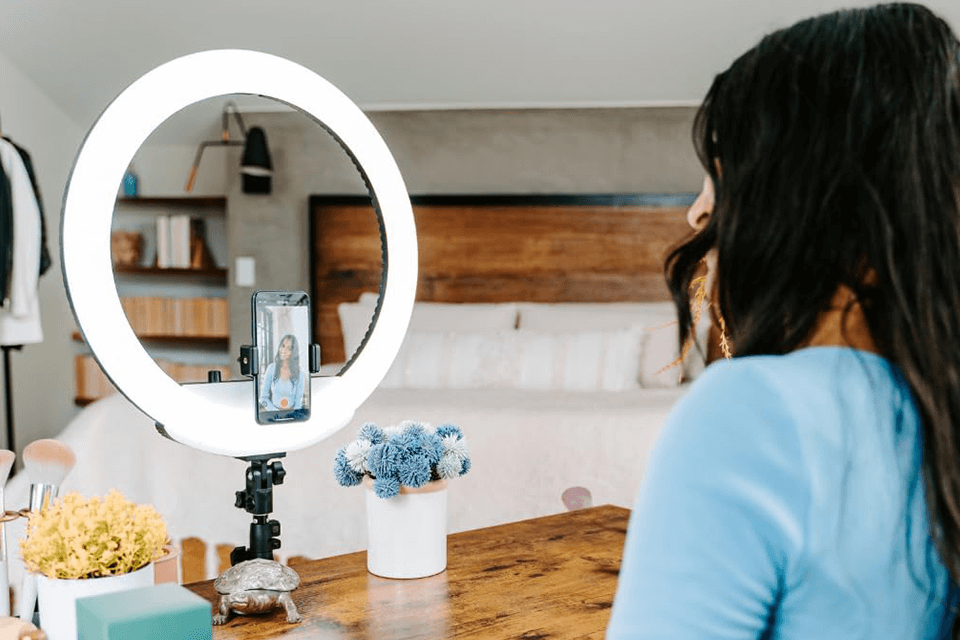
Light source: Key light | Max Brightness: 1500 Lumens | Light temperature range: 3200-5600K | RGB: No | Wireless: Yes | Connectivity: USB
This model appeals to me with its lowering and brightness feature, and the ability to use either AC power or cordless. It provides enough additional illumination and is quite easy to control. Lume Cube has an optimal size, so you won’t have problems bringing the light over the subject.
This model is convenient and user-friendly. The only fact that irritates me is that the system does not notify me that the battery is low, so it dyes without any warning. Besides, it needs a lot of time to charge. But all in all, this product’s advantages prevail, which makes it a decent addition to your lighting setup.
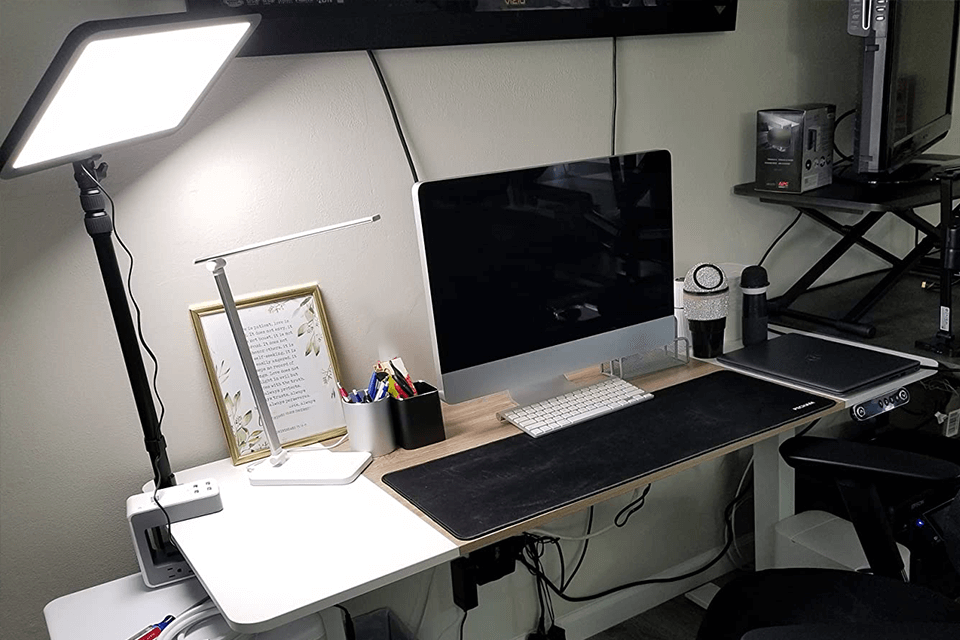
Light source: Key light | Max Brightness: 2800 Lumens | Light temperature range: 2900-7000K | RGB: Yes | Wireless: No | Connectivity: Wi-Fi and Bluetooth
This Razer light provides excellent illumination, but other reasons allow naming this model the best light for streaming like the high level of customizability and compatibility with the Razer Chroma lighting I already used. I have a Razer keyboard and a mouse, as well as a headset and mouse pad. And I managed to sync all my lights for more effective streaming without trouble.
Using this light for several months, I have been completely satisfied with having the light and the C-clamp all in one neat package. When using other lights, I needed to purchase a C-clamp separately. Razer Synapse control is another serious reason to prefer this model over others available on the market today.
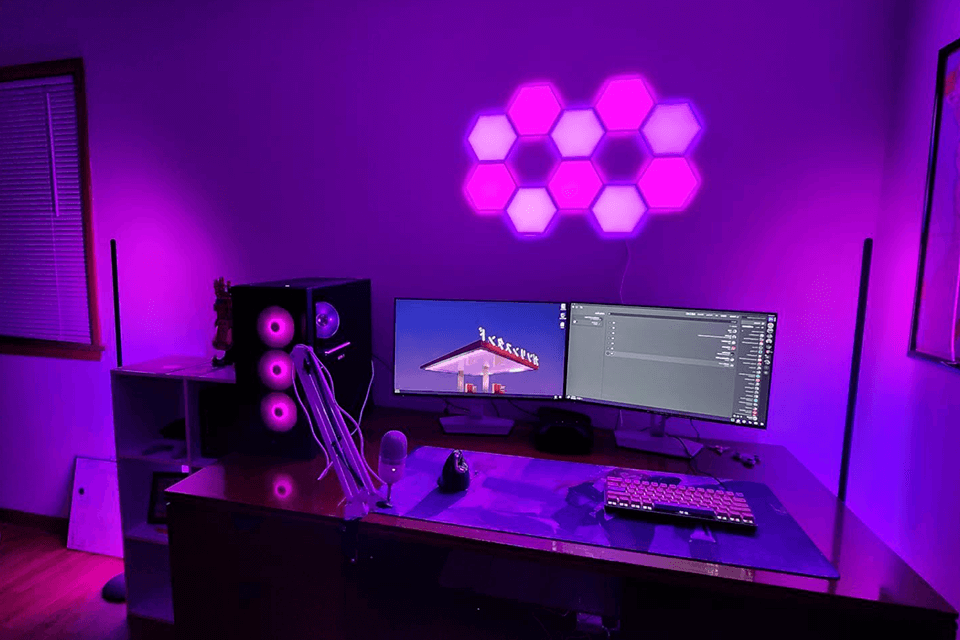
Light source: Back light | Max Brightness: 100 Lumens | Light temperature range: 2200-6500K | RGB: Yes | Wireless: No | Connectivity: Wi-Fi and Bluetooth
This is one of my favorite lights for streaming, as it has a perfect size and solid quality. The mounting and setting of this model are not as difficult as it seems in video tutorials. Although some users write about complex setups, if you follow the instructions, there should be no problems.
Configuration and synchronization with YouTube streaming software was a breeze and did not take much time. Besides, it boasts multiple color preset options and it is also possible to create your own through the Govee App.
It offers a high brightness, so it can be used as a backlight for streaming on YouTube. It also helps reduce eye strain when working on a computer for many hours.
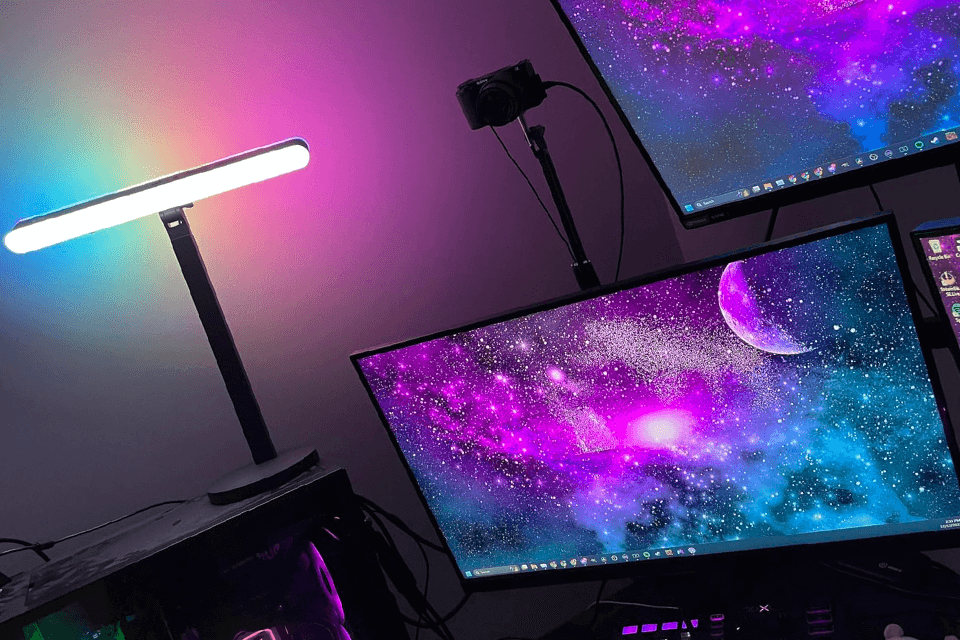
Light source: Key light | Max Brightness: 400 Lumens | Light temperature range: 2700-6500K | RGB: Yes | Wireless: No | Connectivity: Bluetooth, USB
This dual-sided streaming light is quite versatile: it can be also used as a study lamp and ambient lighting solution. The highlight of the Logitech G Litra Beam LX is its dual-side construction. It is fitted with a powerful LED key light that illuminates the streaming sessions just perfectly. Employing cutting-edge TrueSoft technology, this unit distributes light evenly, getting rid of harsh shadows and creating an eye-grabbing glow.
Another advantage is a wide selection of colors that allows for creating the appropriate atmosphere and mood for my vlog. It is also great that I have multiple opportunities to customize lighting to my preferences by changing brightness and color temperature. This model can also serve as a lamp for creating arts and taking amazing pics for my work.
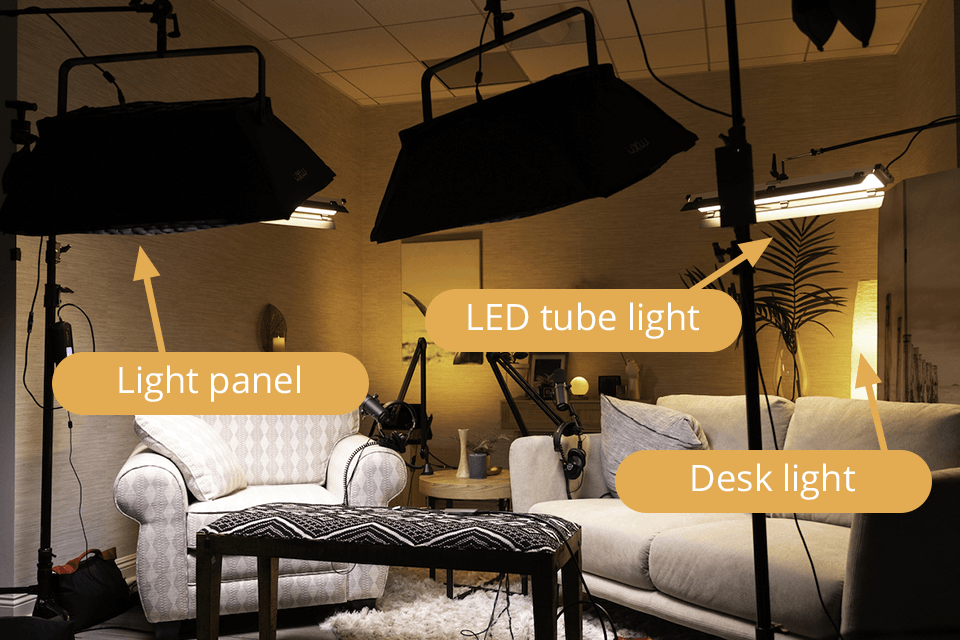
There are different types of lights available on the market today, so before choosing the best light for streaming you should define your specific needs.
Ring light. The main task of this lighting type is to illuminate the subject in front of it. However other applications like the creation of the atmospheric glow or making an image deeper are also possible. This type of light attracts vloggers with an interesting shape, which is perfect for use with different camera angles.
If you want your face to be perfectly glowed during the stream, a ring light is probably the best solution. Besides, it is often included in studio lighting kits.
Desk light. It does not weigh much and has many uses, but most importantly, it provides both a key and fill light. Desk lights are portable and offer various color temperatures, so it is no wonder that it is popular among streamers.
Light panel. Portability and versatility are two main reasons why light panels are so popular. They can serve as background lights or diffusers, as well as for bringing the focus on specific objects with highlights or reflections.
LED tube light. They are ideal for illuminating spaces, people, or products. As it has the shape of a tube, it can be positioned right above the subject, creating soft shadows for more lifelike videos.
LED strips. The possible uses of LED strips include backlights for webcameras or DSLRs, key or fill lights on stage sets, etc. All in all, they will come in handy wherever you need to illuminate the area with light.
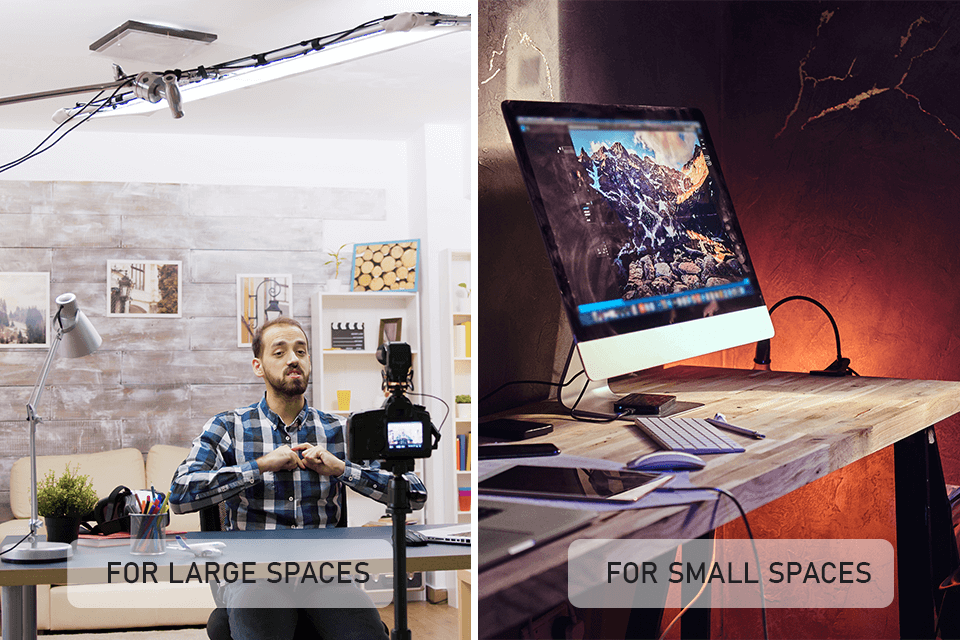
First, to ensure that the light will illuminate your face properly, it should come from the front or slightly off-center. Only on this condition, it is possible to achieve even skin tone and eliminate harsh shadows.
If your lighting setup only includes one unit, place it right above the camera or angle down on your face to showcase all your face features in the most flattering light. In case you have several light units, arrange them at different angles around you to achieve perfect lighting for your streaming.
I prefer a three-point lighting setup, which is easy to install even with basic lighting. I like the result — if everything is set up correctly, you get a balanced, natural look with an emphasis on depth and dimension.
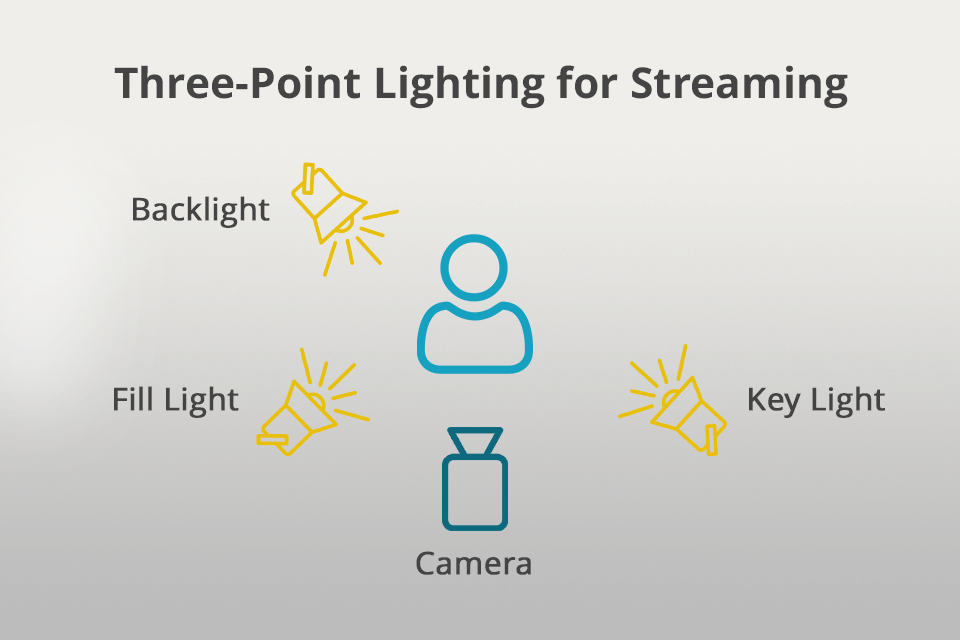
A three-point lighting setup includes a key, fill, and backlights.
Key lights. Casting light directly on the subject, these units are crucial for any lighting setup, as they impact the scene most significantly. Streamers usually place a key light angled to one side right in front of the person.
Fill lights. They are designed to minimize shadows and balance the lighting, so they are usually positioned at the opposing end of the subject and opposite the key light.
Backlights. They are indispensable for those who want to separate a subject from the background. Backlights can serve as lights for green screen and to make the scene more attractive. They are usually set up behind a person, in front of the camera.
Brightness. The brightness of your lighting unit should correspond with the room size and the type of streaming you are up to. For example, a brightness of a minimum of 250 lumens is required for live streaming.
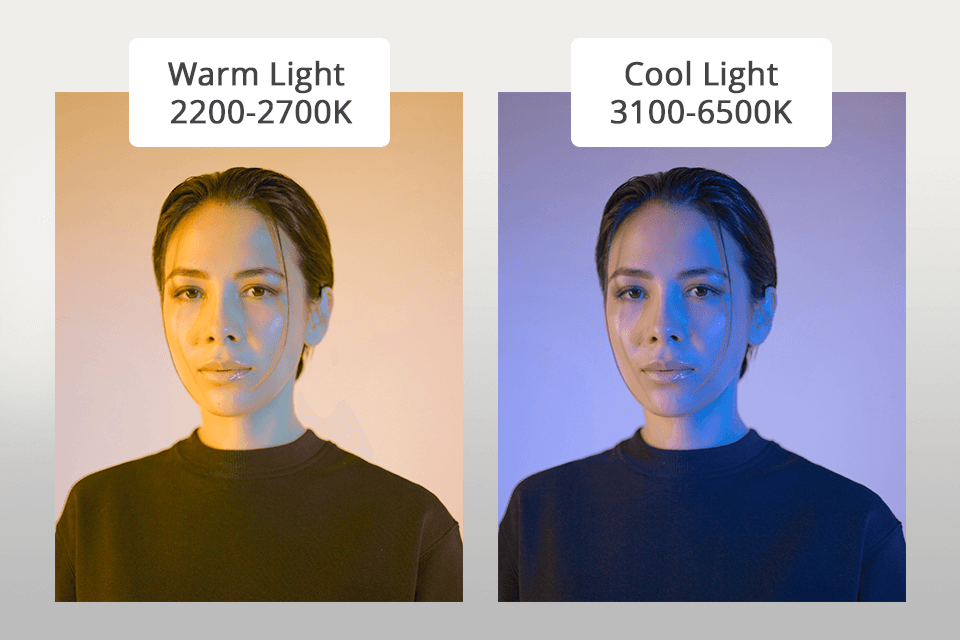
Color temperature. Kelvin is the measurement unit of light color temperature, which ranges from 1,000K to 10,000 K. The higher number denotes the greater brightness.
Warm White > 2200-2700K
Neutral White > 2800-3000K
Cool White > 3100-6500K
The ability to set lighting either to warm or cool to create a warm and pleasant atmosphere or a cooler, more natural feel is the characteristic feature of the best lighting for streaming. Tinkering with different tones, you can create sophisticated effects to grab more views.
Stand. A good stand allows changing the height of the light source, its angle, and distance to create a perfect illumination for streaming your content. It should be sturdy to ensure the stability of the light unit in static or dynamic positions.
Light size and portability. Usually, many streamers work in small rooms like bedrooms and home offices, while others often collaborate or travel for filming – all they appreciate having portable and lightweight units.
Smart features. Although this is not a necessity, it would be beneficial if a streaming light would have smart features for a more convenient video production. When selecting lights for streaming, I paid attention to the availability of such features as Wi-Fi or Bluetooth connectivity, voice control integration, or a companion app or integration with the streaming video recorders.
Think of what your brand represents. The chosen lighting should correspond with your personality and the tone of your content. So, energetic gamers and calm storytellers should have quite different lighting setups. For example, dynamic lighting with RGB video LED lights, which allows customizing color tones and intensity, is ideal for energetic gamers. Whereas for relaxing streams, it is preferable to use warm and soft lights.
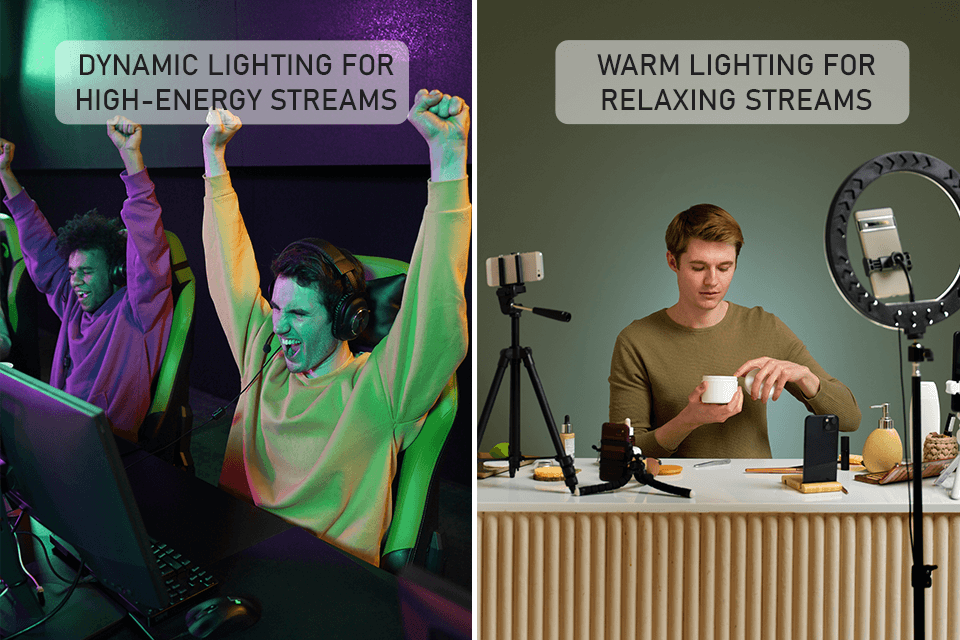
Create the needed atmosphere of your stream with colors.
The specific colors can convey a particular mood, so using this theory in your video streaming is hard to overestimate:
Blue: A symbol of calmness and trust. Choose it for educational or informative streams.
Red: Used to show passion and intensity, which makes it perfect for competitive gaming sessions.
Green: Associated with balance and is ideal for creating nature-themed content.
Consider using interactive lighting. This lighting type appeals to viewers and can induce them to make donations or send messages. Making your streams more appealing, such lighting encourages viewers to engage with your content willingly. Govee Glide Hexa is an example of such lighting.
Switch your style for special occasions. Of course, consistent lighting contributes to your brand recognition, occasional variations can spark the viewers' interest in your content. For example, select one color for the majority of streams, but prefer the other one for holiday content.
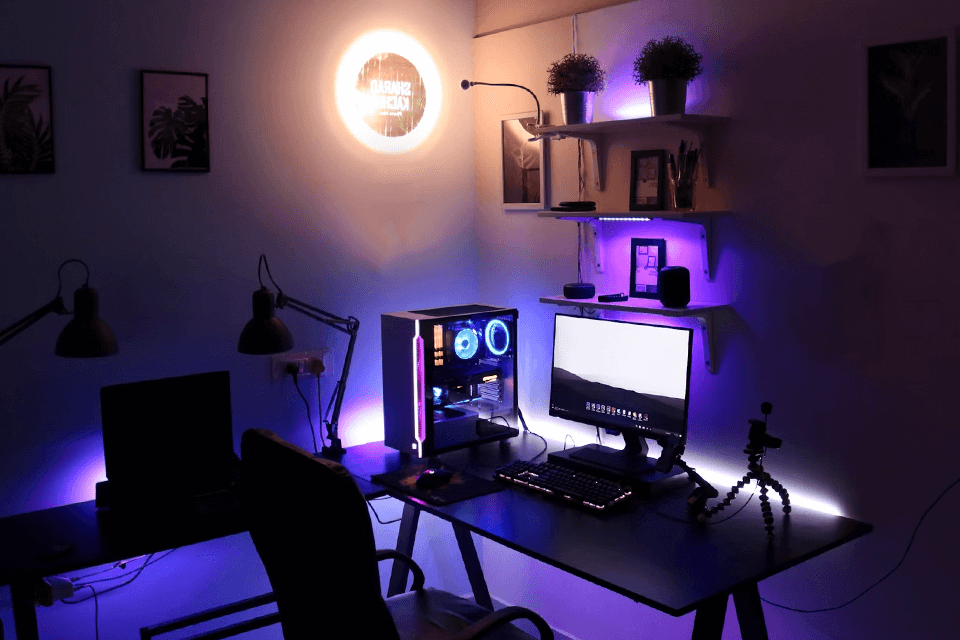
Use accent lighting. Using this lighting type, it is easy to highlight posters, collectibles, or other items that represent your hobbies and personal features. Choose LED strips or spotlights for this task.
A practical lighting setup is paramount. Harsh lighting can cause eye fatigue during long streaming sessions, so it is not advisable. Softbox lights or diffusers can make the light softer, which is essential in this case.
Try different lighting setups and ask for feedback from your viewers. Consider their input to improve your lighting setup and search for more appropriate components to achieve an ideal balance to introduce your brand and refine the quality of streams.
Top-level lighting is crucial for highlighting the streamers’ best features and making them look solid. In contrast, bad lighting can conceal a person’s face and result in a stream of poor quality.
Studio lighting can produce either cool (with a slightly blue tint) or warm (with a slightly yellow tint) illumination. Pay attention to the fact that lighting units marked as "daylight" usually cast bright, flat white, or very slightly blue-tinted light, which is cool and ideal for shooting at night. Warmer lights are usually marked as "soft white" and are a better solution for filming during the day.
For a high-quality stream, you’ll need at least one key light to provide decent illumination. Novices will be probably satisfied with a table lamp or overhead light. But seasoned users who want to produce top-level content should invest in at least one ley light, lamps, and ambient light units to get rid of shadows. Besides, professionals also should consider purchasing a key and fill light, or COB light, if they are going to shoot with 4K cameras for face cams or secondary filming, as poor lighting will muddle details and colors.
The best ring lights may seem to be too much for streaming but if you really need to create top-level content, these units are what you need. A great ring light will let you distribute light in a close-up pic or stream scene with ease.
A 3-point lighting setup can produce ideal illumination for your streaming sessions. This setup consists of a key light, a fill light, and a backlight. Key lights are the main ones. They are installed at a 45-degree angle from the person to the side of the camera.
Strategy is only one of the key components for creating original and interesting content in live streams. High-quality visuals are not less important, so the scene should be well-illuminated with a reliable lighting setup.
If you are not sure, what to begin with to build a perfect lighting setup for your livestreams, the tips and principles described in this article will come in handy. Pick a set that fits your budget and tasks like a universal NEEWER LED Video Light Kit, for example.